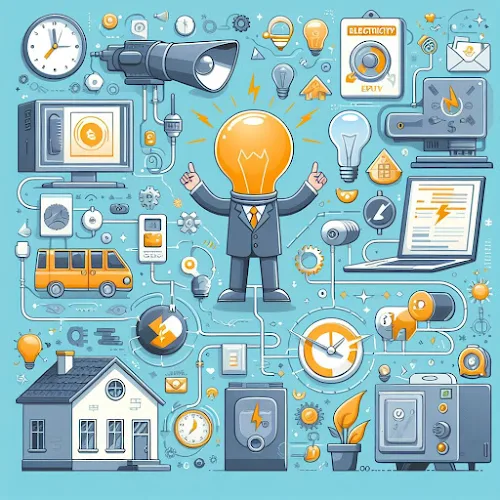Electricity is a concept we encounter daily, yet understanding its essence can be a bit mystifying. Let's unravel the mystery and break down the basics in a way that makes sense for everyone.
Defining Electricity
At its core, electricity is a type of energy. It's the force that powers our homes, lights up our rooms, and keeps our devices buzzing with life. But what exactly makes it tick?
Enter Electrons
Think of electricity as a dance, and electrons are the dancers. These tiny particles move through materials like wires, creating what we call an electric current. This flow of electrons is what gives us the power we need.
Voltage: The Push Factor
Now, let's add some voltage to the mix. Voltage is like the push that keeps those electrons moving. The higher the voltage, the more powerful the electricity becomes.
Resistance: The Speed Bump
But hold on, there's resistance in the mix. It's like a speed bump for our electrons, trying to slow them down. Thinner wires or obstacles increase resistance, making the dance a bit more challenging.
Putting it All Together: The Dance of Electrons
Picture this – electrons moving through wires, pushed by voltage but slowed down by resistance. It's a delicate dance where balance is key, and this interplay of forces is what we call electricity.
How Electricity Works in Circuits
Now, let's talk circuits. They're like the dance floor for our electrons. Flip a switch, and you complete the circuit, allowing electrons to travel and power up your devices. Turn the switch off, and the dance comes to a halt.
Electricity in Our Daily Lives
In our homes, electricity runs through circuits, bringing light, warmth, and life to our spaces. It's the invisible force behind the gadgets that keep us connected and entertained.
The Dance of Electrons: A Metaphor
Think of it as a grand ball – electrons swirling, voltage leading the way, and resistance adding a touch of challenge. This dance creates a symphony of electricity that brightens our world.
Lighting Up the World: The Science Behind It
Speaking of brightness, let's talk about lighting. Electricity powers various lighting technologies, from traditional bulbs to energy-efficient LEDs. It's the reason we can illuminate our spaces with a simple flick of a switch.
Safety First: Tips for Dealing with Electricity
While the dance of electrons is fascinating, it's crucial to approach electricity with caution. Understanding electrical safety, being aware of common hazards, and practicing safe habits ensure that the dance remains enjoyable and hazard-free.
Considering the Environment: Electricity's Impact
Beyond our homes, let's consider the bigger picture. The sources of electricity and their impact on the environment play a crucial role. Exploring sustainable options is the next step in ensuring our dance with electrons is eco-friendly.
The Future of Electricity: Innovations Ahead
As technology advances, so does the world of electricity. From smart grids to renewable energy sources, innovations are shaping the future of how we generate and use power. It's an exciting time for the dance of electrons.
In Conclusion: A Recap of the Dance
In wrapping up, let's recap the basics of electricity. Electrons, voltage, resistance – it's all part of a dance that lights up our lives. Understanding this dance empowers us to use electricity wisely and appreciate the role it plays in our modern world.
FAQs
Is electricity the same as energy?
- While electricity is a form of energy, they are not exactly the same. Electricity is a specific type of energy that involves the flow of electrons.
How can I practice electrical safety at home?
- Simple measures like avoiding overloaded outlets, using quality electrical appliances, and turning off switches when not in use contribute to home electrical safety.
Why is resistance important in electricity?
- Resistance regulates the flow of electrons, ensuring a controlled and safe movement. It's like the speed control in our dance metaphor.
What is renewable energy, and how does it relate to electricity?
- Renewable energy comes from natural sources like sunlight and wind. Utilizing these sources of electricity helps reduce environmental impact.
Are there advancements in lighting technology?
- Absolutely! LED technology, for example, is a more energy-efficient and longer-lasting option compared to traditional incandescent bulbs.


